Eco-tourism helps visitors appreciate the planet’s natural beauty while supporting sustainability and preservation. From Costa Rica’s lush forests to Norway’s breathtaking fjords, eco-friendly destinations offer unique adventures while preserving the environment’s integrity. While Bhutan remains carbon-negative, stressing environmental preservation, the Galápagos Islands and Madagascar feature rare species. Top picks for nature enthusiasts are Peru’s Amazon Rainforest, the Masai Mara of Kenya, and New Zealand national parks. Explore eco-tourism hotspots from Finland’s Northern Lights to Canada’s wilderness, offering thrilling adventures while preserving the earth for future generations. From the lush rainforests of Costa Rica to the Arctic wonders of Norway, the Top 10 Eco-Tourism Destinations in the World offer breathtaking experiences that prioritize sustainability, conservation, and unforgettable adventures for nature lovers.
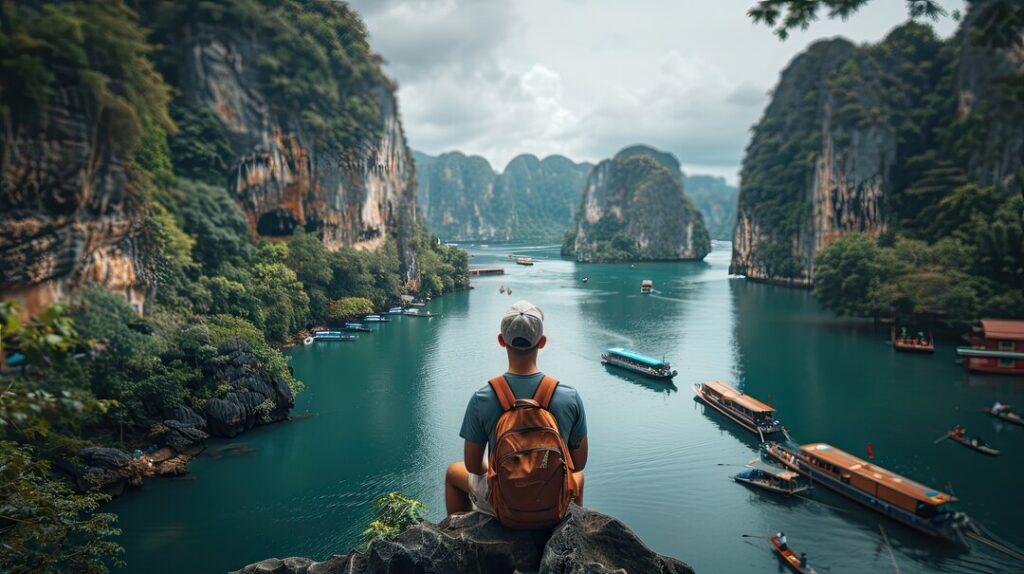
Leave only footprints, take only memories – explore the world responsibly with these Top Eco-Tourism Destinations
What Are Eco-Tourism Destinations?
Ecotourism destinations are destinations that emphasize sustainable travel methods, cultural preservation, and environmental conservation. These locations are usually distinguished by their biodiversity, natural beauty, and initiatives to reduce tourism’s adverse environmental effects. Ecotourism destinations frequently include national parks, wildlife reserves, rainforests, coral reefs, and isolated locations with unique ecosystems.
The following are the fundamentals of ecotourism destinations:
- Environmental Conservation: Environmental responsibility includes preserving natural habitats, cutting waste, and minimizing carbon footprints.
- Sustainable Development: Respecting local communities and maintaining indigenous customs are examples of cultural respect.
- Education and Awareness: Teaching tourists the value of sustainability and conservation.
- Economic Benefits: Using sustainable tourism practices to generate revenue for nearby communities.
Importance of Eco-Tourism Destinations
Eco-tourism locations are essential for encouraging environmentally friendly travel and safeguarding the environment. They are significant for the following reasons:
- Preservation of Natural Resources
- By encouraging responsible tourism, eco-tourism destinations contribute to the preservation of natural habitats, endangered species, and delicate ecosystems.
- The money made from ecotourism is frequently used for conservation initiatives like marine preservation, wildlife protection, and reforestation.
- Assistance to Local Communities
- Ecotourism generates jobs and revenue, helping local communities reduce reliance on harmful practices like deforestation and overfishing, and fostering sustainability.
- By incorporating local communities in tourism-related activities, it promotes the preservation of indigenous cultures and customs.
- Carbon Footprint Reduction
- Eco-tourism destinations prioritize activities such as hiking, kayaking, and wildlife viewing, promoting adventure while minimizing environmental impact and preserving nature.
- Numerous eco-lodges and tour companies recycle waste, use renewable energy, and conserve water.
- Awareness and Education
- Travelers are taught the value of sustainable living and environmental preservation through eco-tourism.
- Travelers who get a firsthand look at nature are more likely to become environmentalists.
- Encouragement of Sustainable Travel
- Eco-tourism demonstrates that travel can be enjoyable and sustainable, setting an example for the broader tourism industry to follow.
- It encourages tourists to make thoughtful decisions, like using less plastic and patronizing environmentally friendly companies.
- Biodiversity Preservation
- Numerous ecotourism locations are found in hotspots for biodiversity, which are home to unusual flora and fauna.
- Ecotourism contributes to the preservation of the planet’s biodiversity, which is necessary for ecological balance, by safeguarding these places.
- Economic Development with Little Effect on the Environment
- Eco-tourism emphasizes low-impact, high-value travel, in contrast to mass tourism, which frequently results in overdevelopment and environmental degradation.
- This strategy contributes to economic growth while guaranteeing the preservation of natural resources for future generations.
Amazing Ecotourism Destinations for Nature Lovers
1. Costa Rica
Explore the Pura Vida Paradises of Costa Rica, where sustainability meets adventure in one of the world’s most eco-friendly destinations.
Known as the “crown jewel” of ecotourism, Costa Rica is a stunning location that skillfully combines sustainable travel methods with scenic beauty. Costa Rica, a leading ecotourism destination, offers breathtaking landscapes, abundant wildlife, and an unwavering commitment to environmental conservation and sustainability. More than 25% of this Central American treasure is protected land, which includes cloud forests, volcanoes, rainforests, and immaculate beaches. Discover Cocos Island’s vibrant marine life, Tortuguero’s mesmerizing sea turtle nesting, and Monteverde’s remarkable biodiversity in its lush cloud forests. Costa Rica’s eco-friendly Pura Vida lifestyle embraces organic farming, sustainable lodges, and renewable energy, bolstering its flourishing tourism industry.
Adventurers can zip-line through jungles, hike national parks, raft wild rivers, or dive coral reefs with minimal environmental impact. Home to over 500,000 species, the nation delights wildlife enthusiasts with close encounters with sloths, jaguars, toucans, and howler monkeys. Costa Rica leads in eco-tourism globally, excelling in conservation, carbon neutrality, and sustainable practices, inspiring environmentally conscious travel worldwide.
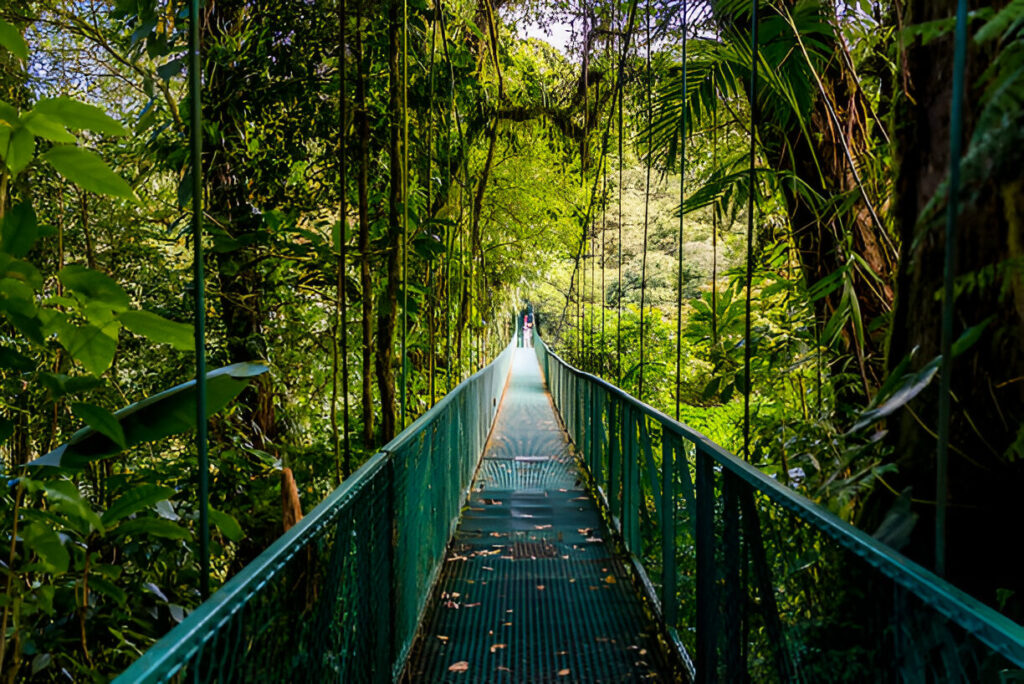
2. Norway
Explore the Fjordic Paradises of Norway, where sustainability meets stunning landscapes in one of the world’s most eco-conscious destinations.
Norway, a leading ecotourism destination, champions sustainability while offering adventures in its stunning fjords, grand mountains, and untouched Arctic wilderness. With 98% of electricity from hydropower, the nation’s strict regulations, eco-friendly accommodations, and renewable initiatives highlight its environmental commitment. Visitors can enjoy kayaking, hiking, and wildlife safaris at Geirangerfjord and Naerøyfjord, UNESCO sites celebrated for their natural beauty. Norway offers thrilling wildlife encounters with musk oxen in Dovrefjell, seabirds in the Lofoten Islands, and polar bears in Svalbard. With minimal light pollution in Tromsø and Alta, Norway offers breathtaking Northern Lights views and unmatched opportunities for stargazing.
Norwegian culture embraces sustainability with eco-lodges, electric fjord cruises, and green-certified tours ensuring minimal ecological impact from tourism. With an emphasis on conservation, visitors can go on whale-watching excursions, dog sledding excursions, and glacier hikes. Carbon emissions are further decreased by the country’s effective public transportation system and electric ferry network. Norway sets a global standard for responsible tourism by emphasizing eco-friendly travel, demonstrating that adventure and preservation can coexist.
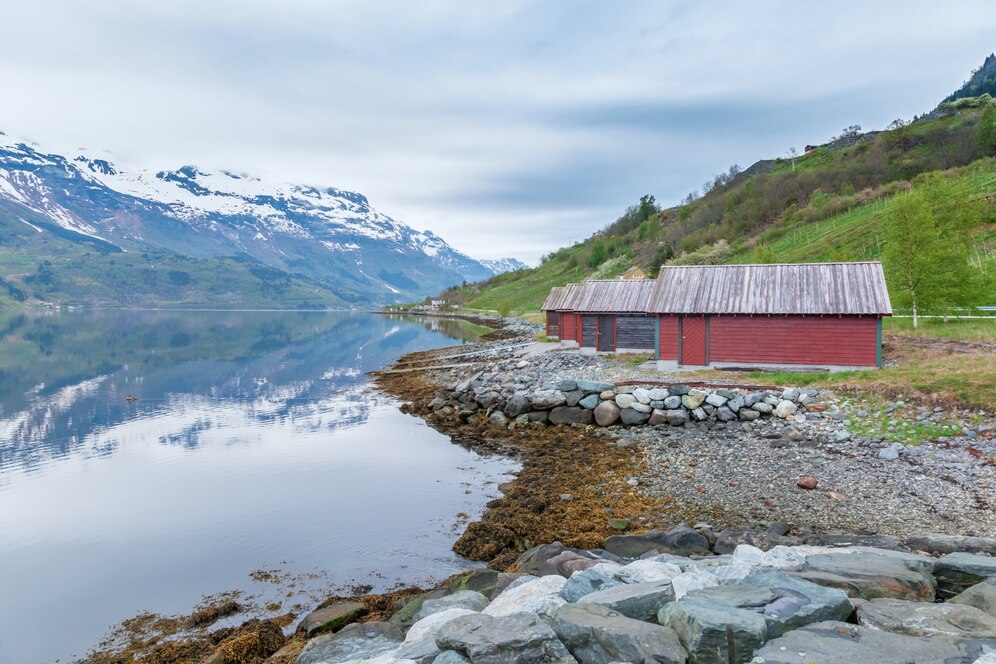
3. Bhutan
Discover the Himalayan Paradises of Bhutan, where sustainability, spirituality, and natural beauty converge in a truly unique eco-tourism experience.
The only carbon-negative nation in the world, Bhutan is heaven for eco-tourists looking for the ideal fusion of a rich cultural legacy, unspoiled landscape, and environmentally friendly travel. Tucked in the Eastern Himalayas, this little but remarkably beautiful country is renowned for its unspoiled forests, snow-capped mountains, and rich biodiversity. With almost 70% of Bhutan’s land covered in forests, it is a refuge for those who enjoy wildlife and can see threatened species including black-necked crane, red panda, and Bengal tiger in their natural habitat. With its unique Gross National Happiness model, the nation prioritizes environmental protection, cultural heritage, and sustainable tourism over-commercialization. Strict regulation of Bhutan’s eco-tourism projects guarantees that visitor count stays low enough to preserve its fragile ecosystems.
Travelers can explore the tranquil Phobjikha Valley, home of migrating cranes, or start the famous Tiger’s Nest Monastery climb. Often referred to as the “spiritual heart of Bhutan,” the Bumthang Valley presents unspoiled settings and holy sites. Bhutan’s eco-friendly lodging, organic farming methods, and ban on plastic bags highlight still another aspect of its sustainability dedication. Adventure seekers can enjoy white-water rafting, birdwatching, and treks while embracing Bhutan’s Buddhist philosophy valuing respect for nature. By ensuring low-impact, high-value tourism, the nation allows visitors to experience its unmatched beauty while actively aiding its preservation. A global model of eco-tourism, Bhutan shows that careful travel and environmental preservation can coexist.

4. Galapagos Islands, Ecuador
Discover the Evolutionary Paradises of the Galápagos Islands, where eco-tourism meets unparalleled biodiversity in a truly transformative experience.
One of the world’s most remarkable ecotourism destinations is the Galápagos Islands, a remote volcanic archipelago in the Pacific Ocean. Renowned for unique biodiversity, these islands inspired Darwin’s evolution theory and continue attracting environmentalists and nature enthusiasts worldwide. A UNESCO site and marine reserve, these islands host unique species like giant tortoises, marine iguanas, blue-footed boobies, and Galápagos penguins. Located 1,000 kilometers from Ecuador, this archipelago hosts unique species like flightless cormorants, marine iguanas, and iconic Galápagos tortoises. To protect the delicate ecosystem, Ecuador has put strict sustainable tourism regulations into place.
These include visitor limits, no-touch guidelines, and environmentally friendly activities like electric-powered cruises, guided nature walks, kayaking, and snorkeling. While supporting regional conservation initiatives, tourists can take in the breathtaking views of pristine beaches, turquoise waters, and volcanic craters. Faced with threats like overfishing, invasive species, and climate change, ecotourism plays a vital role in preserving the Galápagos Islands. Conservation and habitat restoration initiatives are actively pursued by groups such as WWF and the Galápagos Conservancy. Travelers can help ensure that these iconic ecosystems continue to flourish for future generations by adopting sustainable travel practices.
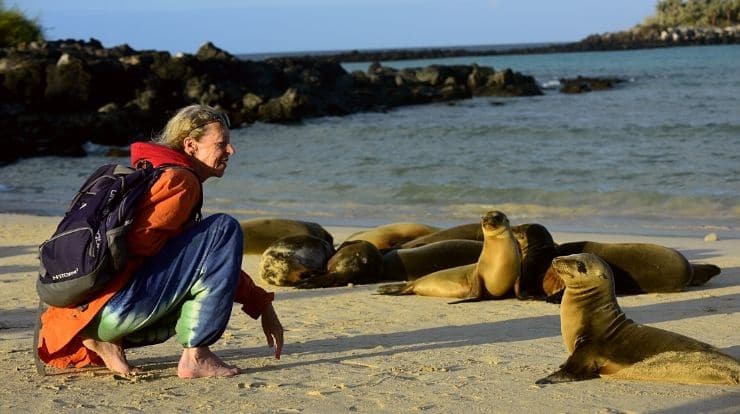
5. New Zealand
Discover the Kaitiaki Paradises of New Zealand, where sustainability and natural wonders come together in perfect harmony.
New Zealand is a haven for eco-tourists, with its stunning scenery, varied wildlife, and strong dedication to conservation. Renowned for national parks, geothermal marvels, and pristine coastlines, this island nation offers adventurous, environmentally respectful tourism experiences. New Zealand’s untouched beauty captivates, stretching from the majestic snow-capped Southern Alps to the lush rainforests of Fiordland National Park. Hikers can trek the renowned Tongariro Alpine Crossing, which is home to emerald lakes and active volcanoes, or explore the famous Milford Sound, a stunning fjord with tumbling waterfalls. Travelers can interact with local communities and discover traditional sustainability practices in the nation’s rich Māori heritage.
For those who enjoy wildlife, New Zealand is home to rare species like yellow-eyed penguins, Hector’s dolphins, and kiwi birds, all of which are safeguarded by conservation initiatives. With eco-friendly lodgings, renewable energy projects, and stringent environmental protection regulations, the government actively encourages sustainable tourism. Experience Rotorua’s geothermal marvels, kayak Abel Tasman’s pristine waters, or stargaze at Aoraki Mackenzie Dark Sky Reserve’s celestial beauty.
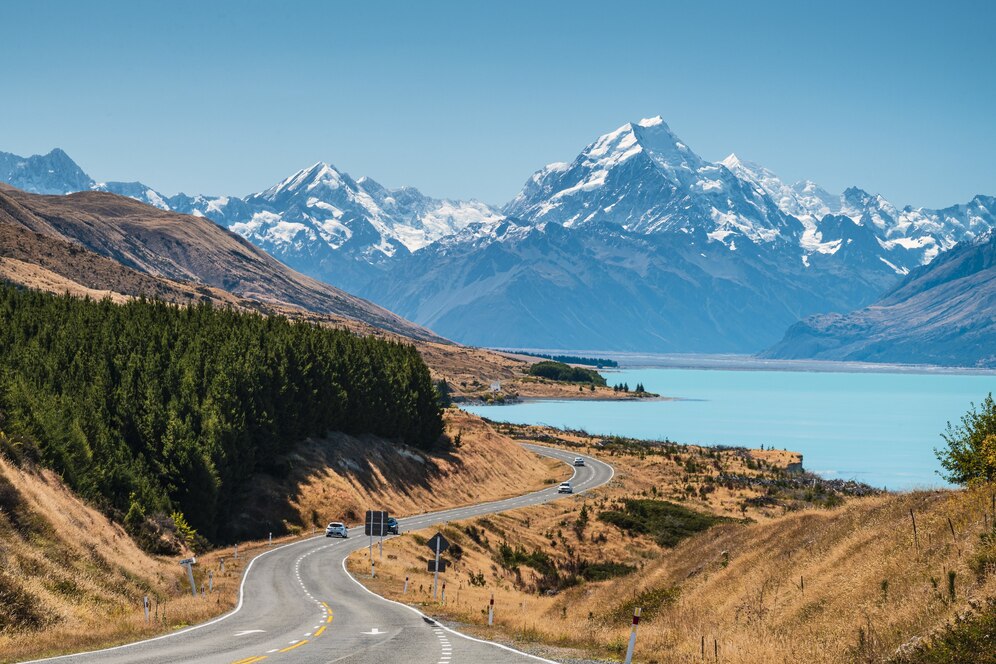
6. Kenya
Explore the Safari Paradises of Kenya, where eco-tourism and wildlife conservation come together in an extraordinary African adventure.
Kenya is one of the top ecotourism destinations in the world, with its diverse wildlife and stunning landscapes. The country provides an unmatched experience for nature lovers and conscientious tourists, from the expansive savannahs of the Maasai Mara to the snow-capped peaks of Mount Kenya and the immaculate beaches of the Indian Ocean. Kenya is a sanctuary for conservation and eco-friendly travel since it is home to some of the most famous wildlife species, such as lions, elephants, rhinos, giraffes, and cheetahs. One of the most amazing natural phenomena on the planet is the Great Migration, in which millions of zebras and wildebeests traverse the Mara River in quest of better pastures. This phenomenon is evidence of Kenya’s robust ecosystems.
Numerous national parks, wildlife reserves, and community-led conservancies are part of the nation’s strong commitment to conservation, which aims to save endangered species and advance environmentally friendly travel. Visitors can observe innovative conservation initiatives, like the preservation of the last northern white rhinos, in locations like Ol Pejeta Conservancy. Kenya also provides distinctive safari camps and eco-lodges that combine sustainability and luxury, guaranteeing a low environmental impact while optimizing the traveler experience. Eco-friendly safaris, escorted nature walks, and cultural encounters with indigenous groups like the Maasai and Samburu, who have been caring for these lands for many generations, are all available to tourists.
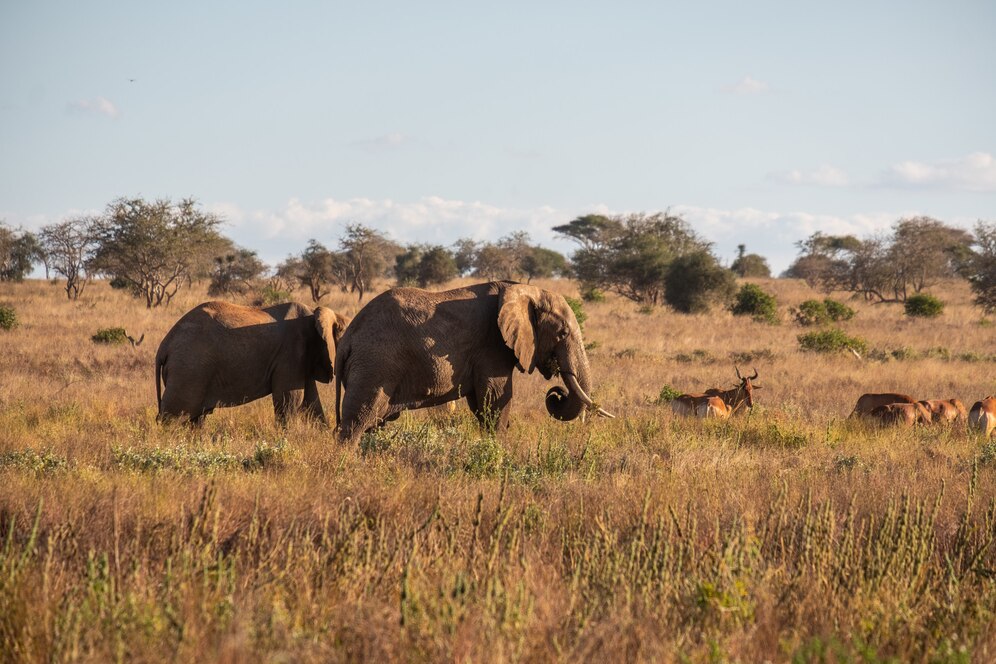
7. Finland
Discover the Arctic Paradises of Finland, where eco-tourism meets serene landscapes and sustainable living in a truly magical setting.
Eco-tourists looking for an unspoiled natural getaway will find paradise in Finland, a country with thousands of glistening lakes, countless forests, and pristine wilderness. Finland is dedicated to environmental preservation and is one of the most eco-friendly travel destinations in the world. It provides the ideal combination of eco-friendly travel and amazing outdoor experiences. With its expansive boreal forests, more than 40 national parks, and the breathtaking Lapland region, Finland offers an abundance of hiking, wildlife viewing, and adventure sports opportunities while keeping a close eye on sustainability. A strong bond with nature is ensured by the nation’s well-known “Everyman’s Right” policy, which permits tourists to camp in approved locations, roam freely throughout its landscapes, and forage for wild mushrooms and berries.
The Midnight Sun produces surreal summer nights where nature never sleeps, while the Northern Lights, one of Finland’s most enchanting sights, light up the Arctic skies in the winter. Travelers who care about the environment can enjoy Finland’s distinctive glass igloos, eco-lodges, and off-grid wilderness cabins, which are powered by renewable energy and made of sustainable materials. With more than 180,000 lakes, the Finnish Lakeland region is ideal for canoeing, fishing, and nature retreats. Meanwhile, the unspoiled Arctic wilderness of Lapland provides opportunities for husky sledding, reindeer encounters, and guided tours offered by the indigenous Sámi communities, who have coexisted peacefully with the environment for centuries. With more than 75% of the nation covered in forests and an energy system primarily fueled by renewable resources, Finland is also a global leader in clean energy and sustainable forestry.
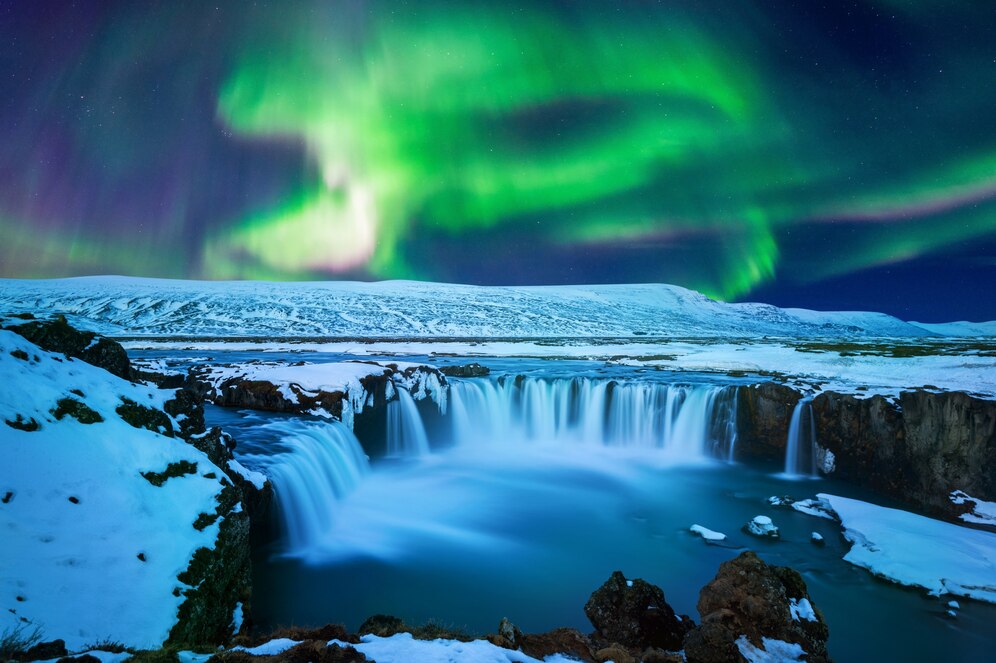
8. Madagascar
Explore the Island Paradises of Madagascar, where eco-tourism and unparalleled biodiversity create a one-of-a-kind adventure.
With its unmatched biodiversity, peculiar landscapes, and unique wildlife that can be found nowhere else on Earth, Madagascar, the fourth-largest island in the world, is a dream destination for eco-tourists. More than 90% of endemic species, such as the famous ring-tailed lemurs, chameleons, fossas, and the majestic baobab trees, can be found in Madagascar, which is frequently referred to as the “Eighth Continent.” The island is a paradise for those who enjoy the outdoors and adventure because of its varied ecosystems, which include pristine beaches, coral reefs, dense rainforests, and arid deserts. Given that Madagascar is threatened by habitat loss, deforestation, and climate change, ecotourism is essential to conservation efforts there.
Exploring protected national parks like Andasibe-Mantadia National Park, where the eerie calls of the Indri lemur reverberate throughout the forest, or the Avenue of the Baobabs, a surreal landscape dotted with ancient trees that have stood for more than a thousand years, is one way that visitors can support sustainable tourism initiatives. For those who love the sea, Nosy Be and Île Sainte-Marie provide breathtaking chances for diving and snorkeling amidst colorful coral reefs teeming with marine life, such as humpback whale migration and whale sharks. A UNESCO World Heritage Site, Tsingy de Bemaraha National Park features surreal limestone canyons and formations, as well as exhilarating hiking routes and stunning vistas. Community-based conservation initiatives are another example of Madagascar’s dedication to ecotourism, where visitors can interact with local Malagasy villages, discover sustainable farming practices, and make contributions.
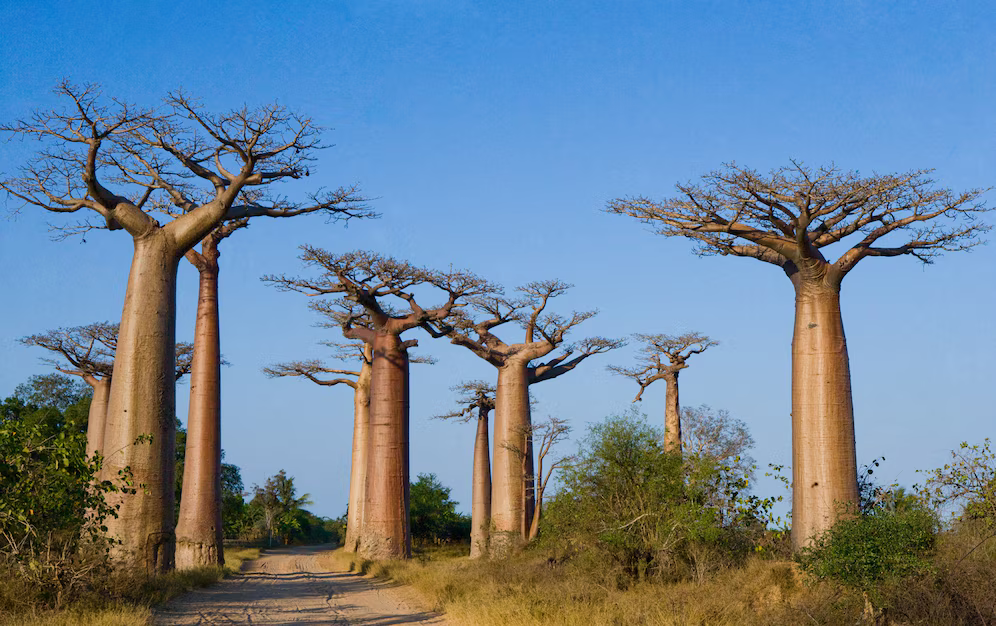
9. Peru
Discover the Andean Paradises of Peru, where eco-tourism meets ancient history and breathtaking landscapes in a sustainable adventure.
From the majestic Pacific coastline and high-altitude Lake Titicaca to the majestic Andes Mountains and the enigmatic Amazon Rainforest, Peru is a haven for eco-tourists. With thousands of endemic species, such as macaws, spectacled bears, jaguars, and pink river dolphins, Peru is one of the most biodiverse countries in the world and a top choice for nature lovers. More than 60% of the nation is covered by the Amazon Rainforest, which provides eco-lodges, escorted wildlife safaris, and community-based tourism programs that aid in conservation and indigenous communities. Through eco-friendly lodges, farm-to-table dining, and cultural interactions with local Andean villagers, the Sacred Valley and Cusco region offer opportunities for sustainable travel.
In order to preserve its delicate ecosystem, the famous Incan citadel Machu Picchu enforces stringent conservation measures, such as limiting daily visitors and promoting eco-friendly hiking routes like the Inca Trail. One of the planet’s richest ecosystems can be found in Manu National Park, a UNESCO Biosphere Reserve, which offers preservation-focused guided tours. The Ballestas Islands, sometimes referred to as the “Galápagos of Peru,” are located along the Pacific and provide sustainable wildlife experiences with dolphins, Humboldt penguins, and sea lions. Eco-tourists can see the magnificent Andean condor soaring over breathtaking scenery at Colca Canyon. Peru’s reputation as a leader in responsible tourism is further enhanced by its dedication to sustainable gastronomy, with local chefs promoting organic and indigenous ingredients. Peru provides a memorable eco-adventure that strikes a balance between exploring ancient ruins, rainforests, and mountain peaks.
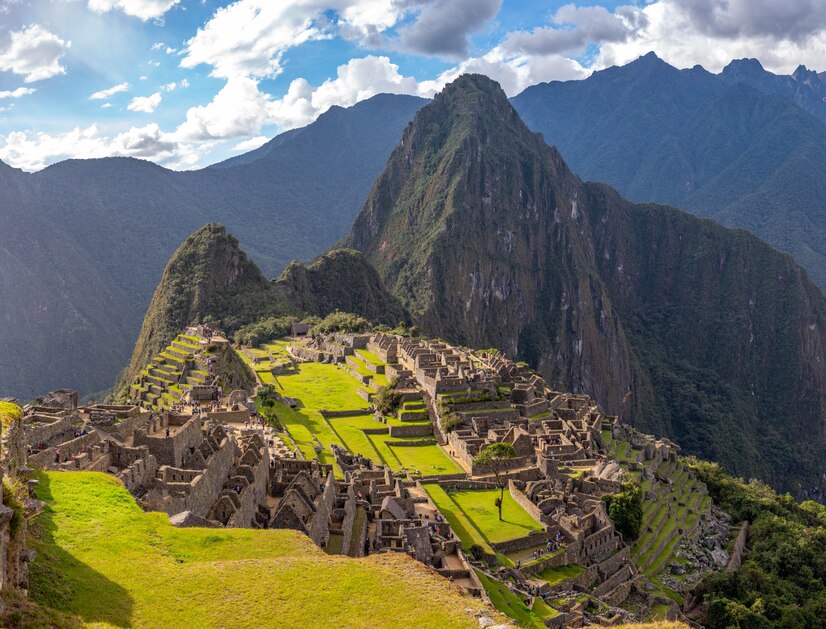
10. Canada
Explore the Wilderness Paradises of Canada, where eco-tourism meets breathtaking landscapes and sustainable travel in an unforgettable journey.
With its vast and varied landscapes that range from rocky coastlines and tall mountains to immaculate lakes and dense boreal forests, Canada is a top choice for eco-tourists. Canada is dedicated to conservation and has almost 10% of its land set aside as national parks and reserves, making it one of the most ecologically conscious nations in the world. The well-known Banff and Jasper National Parks in Alberta are home to grizzly bears, moose, and bighorn sheep, as well as stunning scenery and glistening glacial lakes. The elusive white Kermode (spirit) bear, a rare subspecies of the black bear, finds refuge in British Columbia’s Great Bear Rainforest, one of the world’s largest temperate rainforests. Sustainable tours that honor Indigenous customs and conservation initiatives allow visitors to experience this natural wonder.
Whale-watching experiences featuring orcas, humpback whales, and belugas are available for those who enjoy marine life on Vancouver Island and in the Bay of Fundy in Nova Scotia. Strict eco-friendly regulations are in place to preserve these magnificent animals. Once-in-a-lifetime chances to responsibly and sustainably see polar bears, Arctic foxes, and the Northern Lights can be found in the Arctic in Nunavut and Churchill, Manitoba. Through Indigenous-led ecotourism projects, visitors can discover more about First Nations cultures and their strong ties to the land while taking in Canada’s breathtaking scenery. Canada’s ecotourism industry offers remarkable experiences that prioritize sustainability, conservation, and adventure, from hiking in the Rockies to kayaking along Newfoundland’s untamed coastlines. Canada is a top destination for ethical travel, whether it is through its unspoiled wilderness or local eco-initiatives.

These are just a few of the many amazing eco-tourism destinations around the world. When planning your next trip, consider choosing a destination that is committed to sustainability and allows you to experience the beauty of nature responsibly.
🌿 Pro Tip: When traveling, always support eco-lodges, respect wildlife, and follow sustainable travel practices to keep these destinations beautiful! 🌏💚
💬 Which eco-destination is on your bucket list? Let me know! 😊✨
Read Also
- 10 Most Biodiverse Countries
- Deccan Traps Geology: largest volcanic features on Earth
- Gulfs of the World: Nature’s Majestic Inlets
- 10 Most Breathtaking Natural Wonders in the World
- India’s UNESCO World Heritage Sites
- The World’s Newest Countries
- Umngot River: Meghalaya’s Crystal-Clear Gem
- Mawlynnong: Asia’s Cleanest Village
- Stargazing in India: Top Places to See the Milky Way
- Exploring India’s Best Tourism Villages
- Countries Where Indians Can Travel Without a Visa in 2024
- Drylands: The Vital Lifeline for Over 2 Billion People

SaleOn 8.3X5 inch Portable Storage Organizer
Featuring a double-layered interior compartment, our digital storage bag offers ample space for your cords, cables, USB drives, cellphone, charger, mouse, flash drive, and other electronic accessories. Keep everything organized and within reach.
Frequently Asked Questions (FAQs)
A: Eco-tourism is a form of travel that focuses on responsible interaction with nature and local cultures. It emphasizes minimizing environmental impact, supporting conservation efforts, and benefiting local communities.
A: Eco-tourism offers several advantages over traditional tourism:
Sustainability: It allows you to enjoy the beauty of the world while minimizing your footprint.
Education: You’ll learn about different ecosystems, conservation efforts, and local cultures.
Adventure: Eco-tourism often involves unique experiences like wildlife watching, hiking, or cultural immersion.
Support: You’ll be contributing to the economic well-being of local communities that depend on responsible tourism.
A: Wildlife-watching safaris or boat tours
Hiking, camping, and kayaking in protected areas
Staying in eco-lodges built with sustainable practices
Participating in cultural experiences that respect local traditions
Volunteering with conservation organizations
A: It increases local capacity building and employment opportunities, empowering local communities to fight against poverty and achieve sustainable development
A: Being an eco-friendly traveler involves minimizing your impact on the environment, respecting local cultures, and supporting conservation efforts through responsible travel practices.
A: Yes, it generates financial benefits for both local people and private industry, often through direct investment in conservation efforts.






Your article helped me a lot, is there any more related content? Thanks!
Thanks for sharing. I read many of your blog posts, cool, your blog is very good.
Your article helped me a lot, is there any more related content? Thanks!
Thanks for sharing. I read many of your blog posts, cool, your blog is very good.